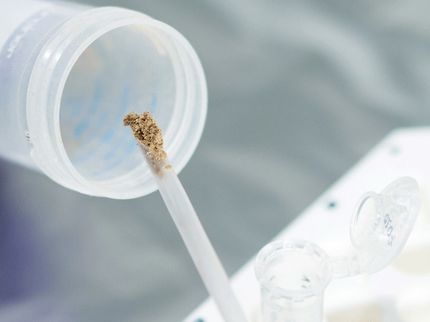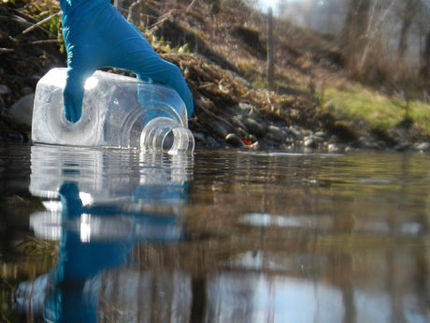Detecting a vast diversity of rainforest animals by swabbing their DNA from leaves
Monitoring wildlife species present in specific areas is a critical first step to estimating the risk of transmission of infectious diseases to humans
In a new study, an international research team shows that the very cotton buds, which we all got to know so intimately during the COVID-19 pandemic, are a valuable tool to map biodiversity. This was the result of an international research team led by scientists at the Helmholtz Institute for One Health (HIOH) in Greifswald, a site of the Helmholtz Centre for Infection Research (HZI) in Braunschweig, Germany. In essence, the researchers demonstrate that a vast multitude of birds and mammals can be detected by simply swabbing the DNA left behind by animals from leaves. They showcased the power of this approach in an ecosystem that hosts a ton of wildlife and where detecting animals has historically proven extremely challenging - the tropical rainforest. The study was published in Current Biology.
In the context of accelerating rates of global biodiversity loss, tracking changes in wildlife is instrumental to inform adaptive management strategies and conserve biodiversity. At the same time, the majority of emerging infectious diseases have their origins in wild animal populations. Thus, understanding which animal species are where is an important first step for estimating and potentially reducing the risk of infectious disease emergence into human populations.
The study was led by molecular ecologist Dr Christina Lynggaard (Helmholtz Institute for One Health and Globe Institute at the University of Copenhagen, Denmark) and community ecologist Dr Jan Gogarten (Helmholtz Institute for One Health and Department of Applied Zoology and Nature Conservation at the University of Greifswald, Germany). It aimed to determine the species composition in a specific area using simple methods. Christina Lynggaard was part of a team that recently demonstrated that animal DNA can be sampled from air - and that gave Jan Gogarten an idea: “If animal DNA is in the air all around us, perhaps it settles and gets stuck to sticky surfaces like leaves. The rainforest and its plants are often called ‘the lungs of the planet’. Could the lungs of the planet represent the ideal place to sample settling DNA from air?”
The research team set off to test this idea in Kibale National Park in Uganda, a place known for its rich animal diversity, and which has attracted biologists for decades. The team ventured into the dense tropical forest armed with 24 cotton buds and the unusual task of swabbing leaves for three minutes with each of them, essentially to clean as many leaves as they could within the timeframe. “To be honest, we did not expect great results,” says Christina Lynggaard. “The rainforest is hot and humid and these are conditions that cause DNA to quickly degrade.”
As such, the researchers were flabbergasted when the results came back from the DNA sequencer. “We found DNA from an absolutely staggering diversity of animals in those 24 cotton buds - over 50 species of mammals and birds and a frog. And all from just a total of 72 minutes of swabbing leaves,” says Jan Gogarten.
The researchers detected an average of nearly eight animal species in each of the cotton buds. These species spanned a huge diversity of mammals and birds from the very large and endangered African elephant to a very small species of sunbird. Detected animals included the hammer-headed fruit bat, which has a wing-span of up to one meter, monkeys like the elusive L’Hoest’s monkey and the endangered ashy red colobus, as well as rodents such as the forest giant squirrel. A huge diversity of birds was detected, including the great blue turaco and the endangered gray parrot. “This diversity of detected animals and the high animal detection rate per swab showcase that animal DNA can be readily sampled from leaves,” says Jan Gogarten. “The high detection rate and the ease of sampling can make swabbing a new tool with which to inform wildlife management strategies.”
Animals worldwide are facing grave threats from human activities, with biodiversity loss particularly severe in tropical regions. This loss has far-reaching consequences for the essential services and functions provided by these ecosystems, including pollination and seed dispersal. Monitoring of animal populations is therefore crucial to comprehend the scale of ecosystem changes and to guide the development of effective management strategies. Further, knowing what animals are where is important to assess the risk of spillover of diseases in areas where wildlife can get into contact with humans.
“With numerous factors rapidly changing on our planet, understanding how they influence wild animal populations is a complex yet critical task, and we anticipate that DNA detected with leaf swabs can provide us valuable insights,” says Jan Gogarten. “We know that many animals live in these dense rainforests, but we rarely see them, and their changing distributions are really difficult to map. This remarkably straightforward sampling method gives us an efficient tool to make the unseeable seeable.”
"Leaf swabbing itself does not require fancy and expensive equipment or lengthy training to carry out, and so it can easily be carried out by citizen science programmes," says Christina Lynggaard. "During the COVID-19 pandemic, testing required automated extraction of nucleic acids from millions of swabs per day, and the analytical devices were spread to every corner of the planet. What if these instruments could be repurposed for using swabs to monitor animals on a massive scale?"





















































